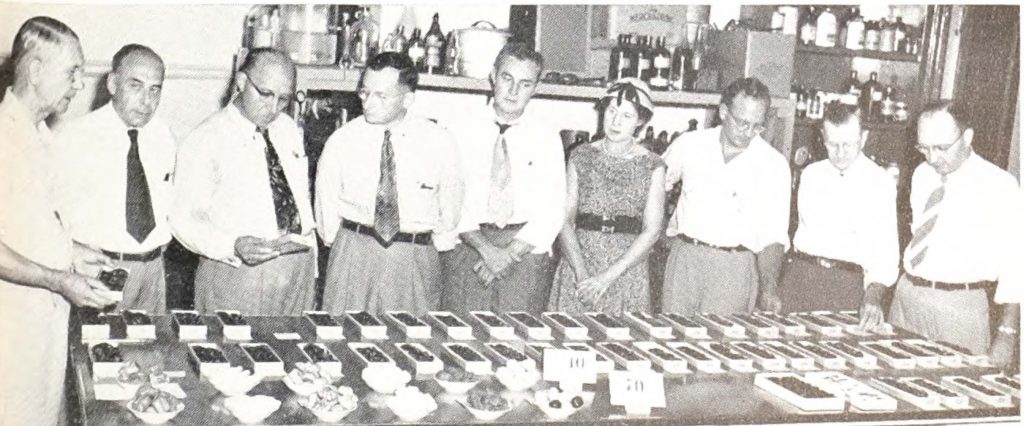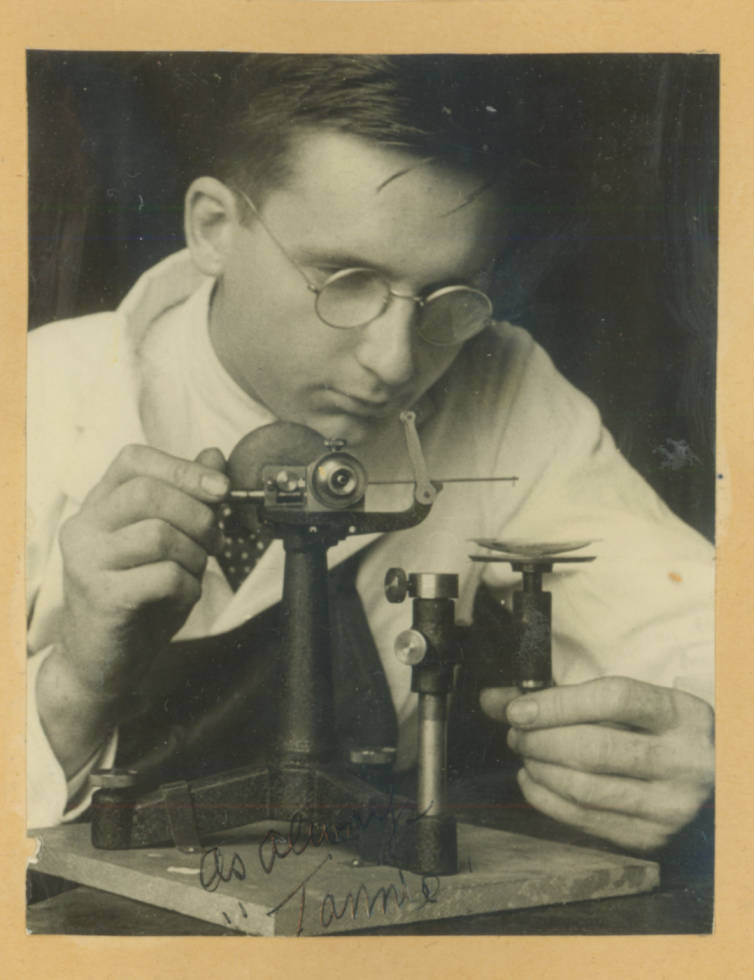Guest post by Anthony Romanelli, Class of 2023
Illinois Wesleyan’s Founders’ Day of 1969 was a momentous occasion. Apollo astronaut Frank Borman was being hosted by the University. His entire Apollo 8 crew were presented with honorary doctorates and Borman placed a time capsule in the newest building on campus. Borman, the University, and local Bloomington-Normal businesses all contributed to an extensive list of items to place in a time capsule in the Mark Evans Observatory. Some of the notable items on the list include an audio tape recording of a Christmas message by the astronauts, an integrated circuit identical to the ones on Apollo 8 (provided by the General Electric division in Bloomington), and perhaps most noteworthy, a medallion that had joined the astronauts on the first crewed flight to reach the Moon’s orbit. [A post about the time capsule contents is available here.]
But when the capsule was opened during Homecoming of 2019, many of the perishable objects had been completely destroyed, including much of the papers. Moisture had somehow penetrated the copper box and corroded the material. Upon closer inspection, one of the culprits may have been a packet of “space food” contributed to the capsule by the local candy company Beich Industries. The food itself was gone; all that remained was a label from the company and a product description by its head researcher, one Mr. Alikonis. The man behind the space food had a story of his own, one that eventually led to his product in space.
Justin J. Alikonis was born in Johnston City in southern Illinois on December 7, 1912. When he was 18, he hitchhiked to Bloomington during the Great Depression looking for work to pay for college. He found a job at the Quality Café at 426 Main St in downtown Bloomington. There, he worked as a busboy, a waiter and a short-order cook as needed to pay his tuition. Luckily for him, in 1932 IWU president Harry McPherson had established a “livestock for tuition” plan, where students could trade in live animals or produce from family farms as tuition payments. The controversial policy was enacted to keep young Central Illinoisans in school in the wake of the Depression, and this video shows Alikonis trading in a pig for his first semester of 1932. (While family relatives of Alikonis confirmed his appearance in the film, it is unknown why he uses the name “Isaac Rosenburg” in it.)
Alikonis graduated from Illinois Wesleyan in 1935 as a chemistry major, and completed graduate school at the University of Illinois. By the late 1930s, Alikonis had a lab in Bloomington and respected reputation as a preeminent chemist. Alikonis provided Bloomington with a variety of services using his homemade equipment, from manufacturing stain removers for the local laundromat to providing forensics for the McLean County Sheriff’s Department in a suspected poisoning case.
It wasn’t until World War II that Alikonis began working for the Beich Candy Company, his employer for the next 40 years. Paul F. Beich was born in Wehlen, Prussia (now part of the German town of Bernkastel-Kues), a German immigrant to New York. He moved to Bloomington to live with his aunt, and in thirty years went from not knowing a word of English to being one of the most notable businessmen in Blommington. It was Beich who convinced John Hershey to set up a factory in McLean County to be closer to the dairy supply, and Beich himself later bought the factory. Beich Co.’s then-owner, the elder Beich’s great-grandson William, employed Alikonis as a researcher and designer in his candy factory in west Bloomington (since sold to Nestle) and the young chemist began working on high-energy candy bars to feed the G.I.s in the Pacific. During the war, over 95% of sales went straight overseas to the Armed Forces. In 1951, Beich and Alikonis participated in a rations design conference hosted by the United States Army Quartermaster Corps, and Beich helped supply the candy for homesick troops.

Justin J. Alikonis (fourth from left) participates in a candy taste test at Georgia Agricultural Experiment Station with other representatives of the industry on behalf of the Quartermaster General of the United States Army, October 1952.*
Alikonis quickly realized how valuable his caloric little bars were, and as the Cold War dawned, Alikonis began making bars designed for long-term storage in bomb shelters. At the height of the Space Race, Beich rebranded its bars and sold them to NASA for consumption during space missions. During the Mercury-Atlas 8 mission, astronaut Wally Schirra ate Beich bars made with Alikonis’s patented formula, and on Apollo 8, Frank Borman shared them with his crewmates. The Beich bar recipe was also contained in the IWU time capsule, which reveals the new technologies Alikonis was working on. Determined to create an inexpensive, non-perishable candy, Alikonis was one of the first to use sorbitol, a natural sugar substitute, in his candies. Sorbitol, along with aspartame, is one of the most common natural flavorings used in diet soda today.
Alikonis was equally successful in the civilian market. He designed and patented, among other things, a marshmallow-making machine, the “Whizolater”, named after the Beich flagship candy bar, the Whiz. With no moving parts and operating solely on pressurized air, the Whizolater could make 1,400 gallons of marshmallow or nougat per hour. Curtiss Candy Company, the original makers of the Baby Ruth (then called the Kandy Kake), bought several Whizolaters for their Chicago-based plant. In the 1970s, “Beich’s Caramels”, which in reality were fruit-flavored taffy squares, became a hit once jokes (submitted to the company by children) were added to the wrappers. Beich’s Caramels became known as Laffy Taffy, a popular candy to this day.
Alikonis returned to IWU during Founders’ Day ‘69 to advertise his “space food” rations, and place a sample of his famous ration bar in the time capsule. While the bar may have rotted away, IWU will always have the story behind it, of the curious chemist-turned-candymaker who made history, on Earth and beyond.

This informational leaflet concerning the Beich survival bar was found in the 2019 after the 1969 time capsule was opened, but was unfortunately moisture damage deteriorated it beyond preservation. Alikonis’s name can be seen towards the bottom of the decayed paper.
*Group photo credit: Quartermaster General of the Army. Activities Report of the Quartermaster Food and Container Institute for the Armed Forces. Vol. 4, No. 3, pg. 257. Research and Development Associates, Food and Container Institute, Inc., 1952. https://books.google.com/books?id=svDhVf4KeDAC&lpg=RA1-PA98&dq=beich rations&pg=RA2-PA163#v=onepage&q=beich rations&f=false.

